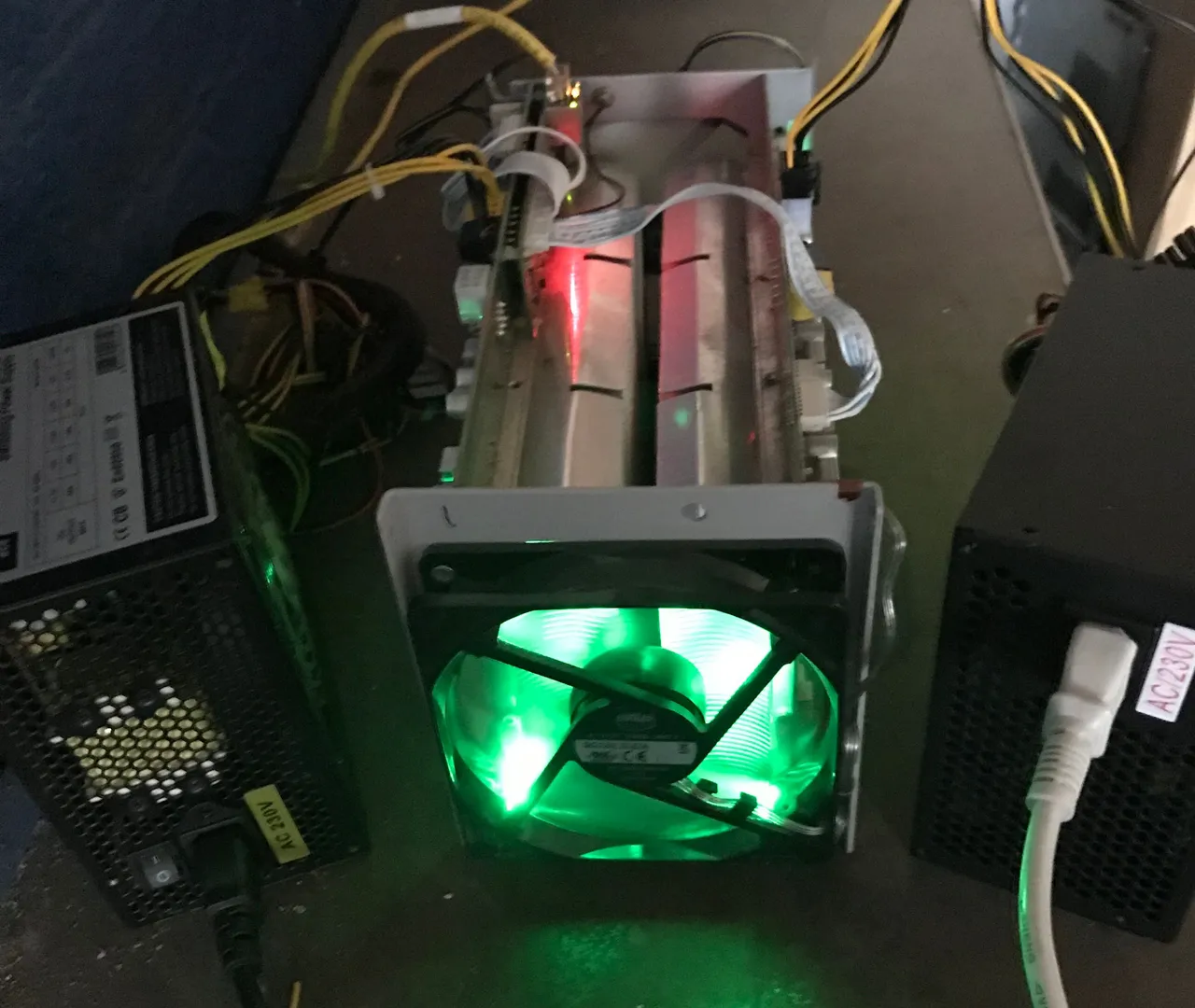
So I suppose Steemit is partly responsible for this little journey, I had of course over the years seen online various references to bitcoin mining but never really found the time to look into it - basically find out how to do it. Since joining Steemit and reading through the wide and various posts including the many in depth Cryptocurrency related posts I decided it would be a good time to investigate the Bitcoin Mining phenomenon.
Unfortunately for me, all I actually discovered is that I am a good four years behind the Bitcoin Gravy train. I don’t fully understand the process (just like I really don’t understand how Steemit works despite doing my best to read about it) and rather then cut and past great lengths of technical analysis on how bitcoin generation is achieved - I’m going to give you my basic analogy. The whole system appears to be based on blocks where very complicated equations need solving within the block - and when this is achieved the block can then be added to the Block Chain and the finder is rewarded. Because it would be very difficult for one user to solve a block, most join a mining pool where the work is shared amongst many and the rewards are proportionally shared out as to the work put in.
The reason I started this post as Bitcoin mining is dead - is mainly due to the fact as mining has grown so have specialist machines dedicated to working out the complicated equations faster and faster. Obviously you can not create an infinite number of bitcoins, so as computing power has increased so has the difficulty to generate bitcoin - to level out the network and ensure a steady production. The difficulty is changed to account for increases - or even decreases in the amount of computing power being dedicated to Bitcoin mining. To get even a sniff of mining a bitcoin today you would need equipment capable of mining at incredible speeds - tens of th/s which would be incredibly expensive. In fact for most small miners - the cost in electricity the miner uses has now increased beyond the possible return in Bitcoin they could generate - so they are packing up the machines or selling them on.

To give you a real, quantifiable idea of the computational difficultly mining Bitcoin is now at - I ran a mining program on my 15” Retina MacBook Pro which has a pretty powerful graphics processor in it. The mining speed the GPU achieved was around 38 mh/s (mega hashes per second). Or basically nothing worth while. Compare that to the top workers on the mining pool I joined - they are working at 158969 gh/s (giga hashes per second). That work might be many devices working together - but still it’s an incredible number. Back in 2013 you could purchase specific miners - in my picture below the Antminer S1 is capable of working at 180 gh/s - not too shabby and at the time would have been able to generate bitcoin for the owner. But today - even the speeds it achieves are going to generate nothing but tiny fractions of shares in a single bitcoin.
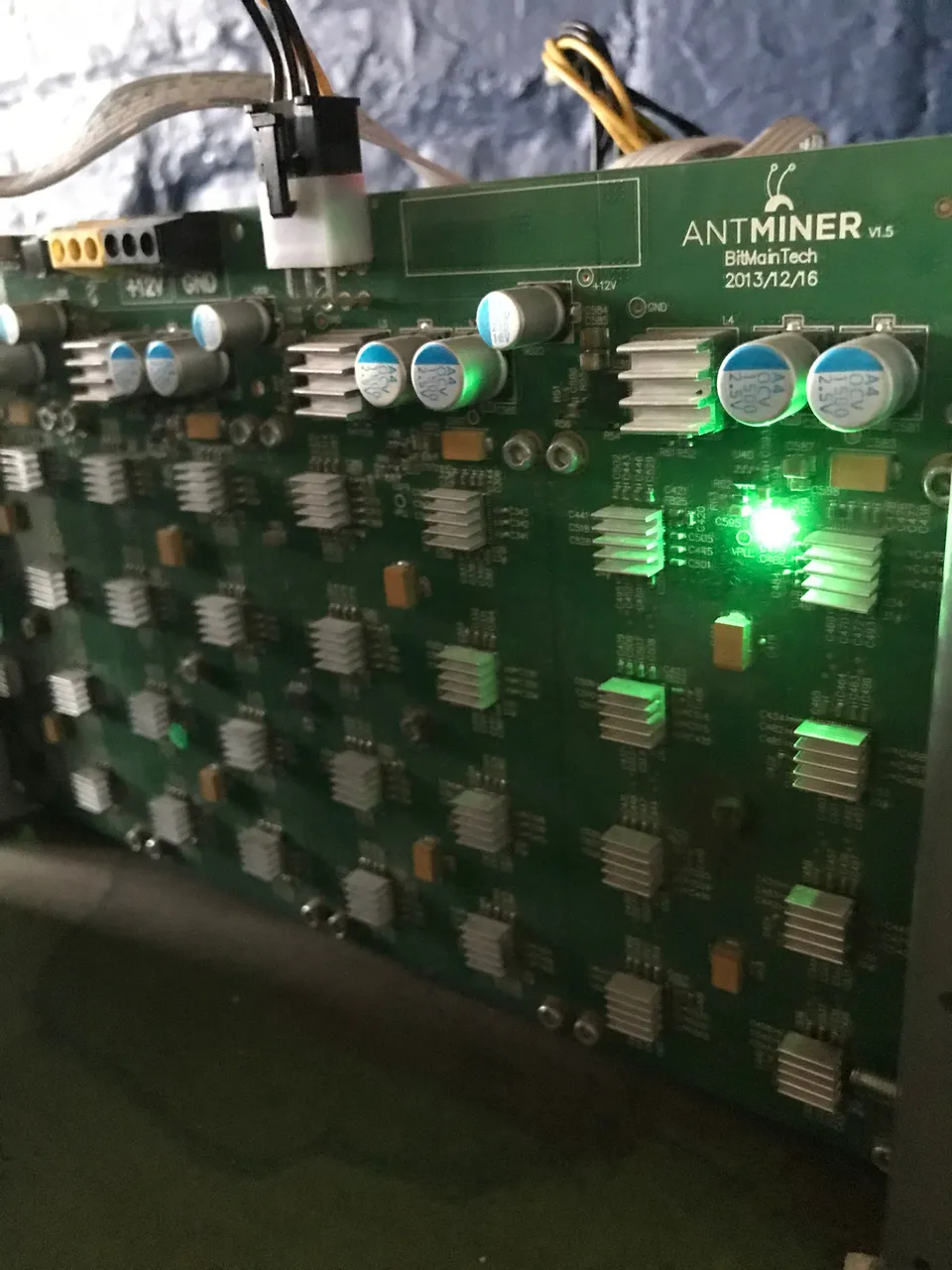
So in my journey to investigate Bitcoin Mining I scoured eBay and managed to win a couple of auctions for Antminer S1 units with broken cooling fans. The fans are cheap and simple to replace, but with these machines you have to obtain a power supply - using a PC PSU to provide the regulated 12v power it needs. Reading up the wattage they need is just 400 watt - so I figured an old 650 watt PSU I had lying around would work fine, and obtained a similar one for the second unit. Following online guides I wired the units up, and set the first one off - lights came on and the fans whirred - so I went off to where I was setting the second one up and hooked that up - it started and lights flashed. Back to unit number one - and it was dead! No lights, fans still. Quite a mystery, I put it down to the power lead for the PSU - so I replaced that and the unit powered up again - perfect. Or it was for two minutes then it went off again. I left that mystery and returned to the first one that was at least still whirring and flashing. Plugged it’s ethernet cable into a computer to reach it’s admin page and replace the details to my own and set it’s subnet to my own networks. These units are independent computers running linux - just with massive boards of specialist ASIC chips to perform the calculations needed for bitcoin mining. So with everything set up for my mining pool and subnet I plugged the ethernet cable back into a router - the lights started to blink very fast on it - and then went out - all lights and fans silent. Bemused I took the PSU power lead off and tested the fuse - fine no problem there. Plugged the psu back in and turned on the power - everything booted up again fine right up until the fast blinking light - then cut out. At this point I realised when it started mining bitcoin - the amount of power the unit needed must be greater then maximum output for the 12v rail of the psu and it’s overload protection was shutting it down. As the units have two mining blades - and the linux system only exists on one of these - I disconnected the power and lead from the second blade and set it off. It powered up and ran fine no problem mining away. Repeated the process with the other unit and it too ran with no issues.
I spent a few days doing more reading up on the units, to find that because of the amount of power they need high end gaming PSU’s were advised such as Corsair units - the only problem with this is they cost four times more then the miners cost me and as hobby / experiment I didn’t really want to invest so much in them. Thinking logically the two cheap psu’s I was using were working fine running a single blade, so in theory if I got two more cheap psu’s so each blade had it’s own psu to power it - the spread load would not stress them and worst case if the work killed one I would have a spare to keep at least one blade running. Plus two cheap psu’s was still a fraction of the cost of a Corsair!
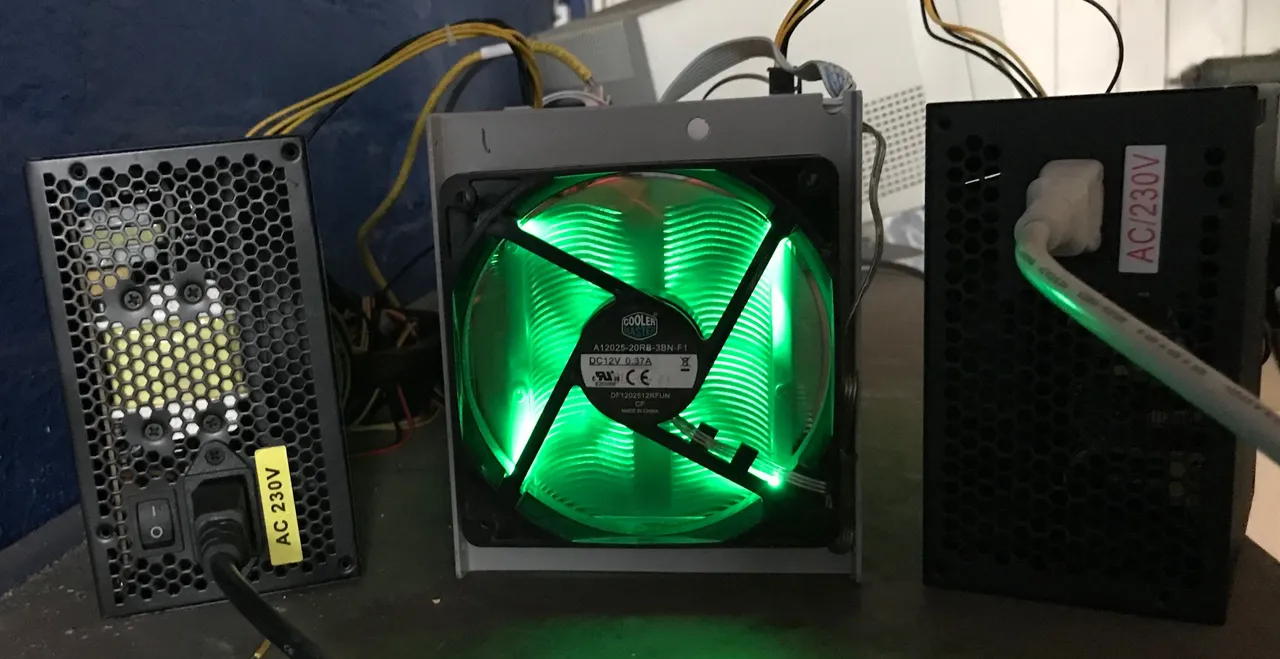
So that is how my rig is now running, two psu’s which are not getting very hot - and I have pointed their fan outflow at the mining boards of the antminer to help cool those chips. Below we can see the working pages for each unit
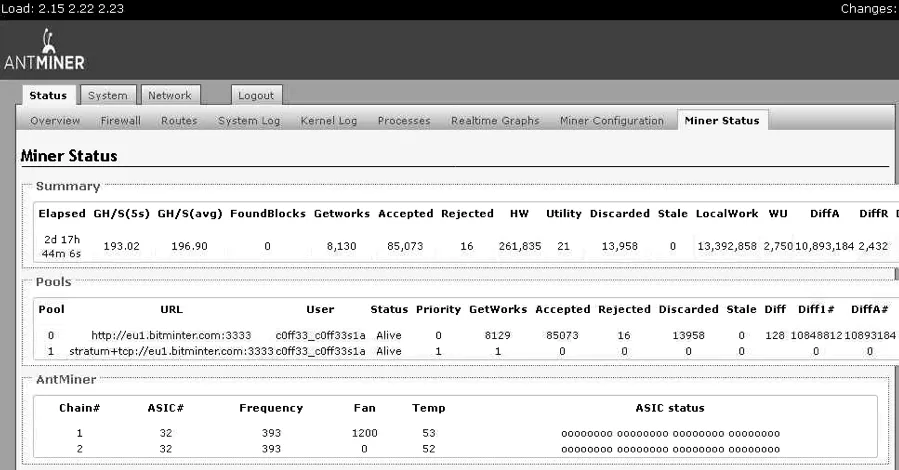
Both of the miners have been overclocked, I used slightly different parameters for each but it doesn't seem to make much difference - they average around 196 gh/s
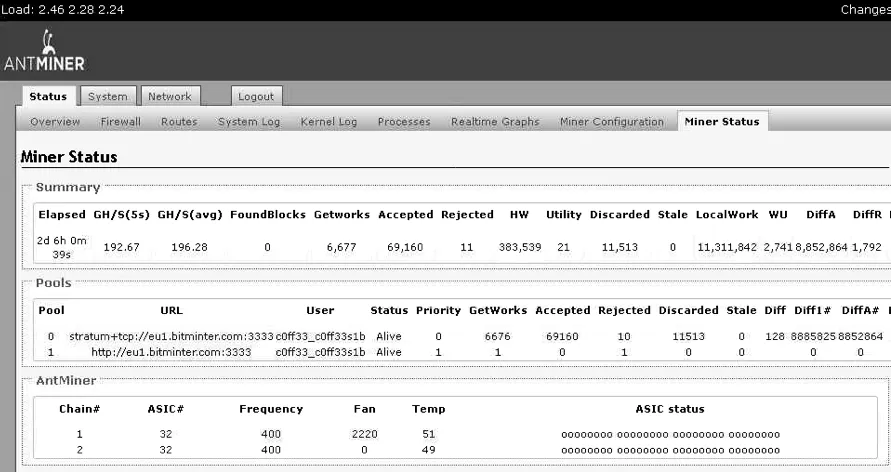
The antminer itself has two big fans, one pushes air into the heat sink and the other pulls it out. Both are in unheated rooms, which as an added bonus are both noticeably warmer with the miners running, the miners themselves are reading pretty average temperatures and the fan rpm which is controlled by the system is kept very low.
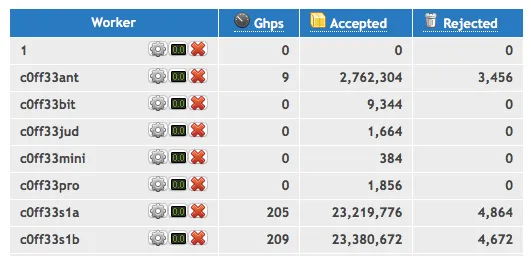
For an idea of performance this is my workers list in the bitminter pool, the first one is actually a Butterfly Labs Jalapeno at 7gh/s it’s a modest little device - I will do a separate post on this because it would not look out of place on an office desk - it does require a separate computer to run the mining software.
The second and third workers down the list are PC’s running mining software on their GPU’s - as you can see the result is pitiful. Fourth was a failed attempt on a Mac Mini lol. Fifth in the list in the MacBook Pro - which achieved that result after four days running mining software - definately not worth the effort. The last two are the two Antminers - they are doing well for the short time I have had them running, both are overclocked to give an average 196 gh/s which they are managing while remaining stable.
To conclude, while Bitcoin mining itself might no longer be very profitable unless you invest in big expensive equipment - if you have a room you need heated don’t buy an oil filled electric radiator - just get an old antminer and hook that up - heat the room and generate some tiny fractions of bitcoin at the same time!